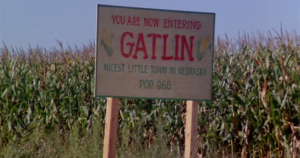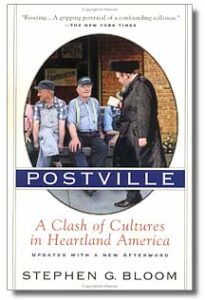What might the rural town of the future look like? I recently took a short vacation in the Catskill Mountains, in upstate New York, and thought a lot about this question. I was especially struck by the incredible potential for growth many of the towns there have. They are quaint, with affordable housing, and surrounded by seemingly infinite acres of pristine wilderness. By most metrics we have for measuring happiness, one should be able to find it in these places. They should be thriving.
Today, that potential is having trouble being actualized. Many of these towns are suffering economically, and people do not want to live where they cannot make a living. This situation in post-industrial America has been ongoing since the middle of the previous century or even earlier, and there is very little opportunity to be found in places that once were boomtowns. Government programs to revive these economies, such as legalizing gambling in upstate New York, have not yielded results, and seasonal tourism is usually not enough to sustain rural economies. Donald Trump insists he will bring back the manufacturing jobs that once existed, but those jobs simply will not exist in the future. Maybe the production of fossil fuels can help; that is, until they become obsolete too.
But what if the economy of the future could bring towns on the brink back to life? That question may seem counter intuitive, because so far, technology has actually been detrimental to rural communities. The internet and megastores like Walmart have made Main Street style stores superfluous, and only given back minimum wage jobs in return or nothing at all. Agricultural automation has left only 2% percent of American workers employed in the sector. Yet, two innovations might reverse this trend: remote work and the universal basic income (check out this post that helps explain UBI). Both could decelerate the rate of urbanization by bringing an influx of people and money that would recreate the boomtown.

Rural America of the Future
Who amongst us city dwellers hasn’t been awestruck by the beauty of the countryside and had the thought “what if I quit my job, and just went to go live on a farm”? Few people will ever actually do this, either because they are not serious, or because it is difficult to do responsibly. While the psychological factor behind urbanization will not disappear anytime soon (let’s call it the desire to be where the action is), there will always be a personality type that dislikes the city and desires a more quiet lifestyle. Remote work and the universal basic income could enable those people to fulfill their dreams.
Though many of the predictions about a remote work explosion have fallen flat, the number is rising and it may be accelerated by virtual reality. A population influx of people working lucrative jobs with plenty of disposable income would jump start the economy. They would be followed by business and superior healthcare, as well as fill the coffers of local governments. On the other hand, a person subsisting on a basic income might also see the country as an attractive economic option. That person could stretch his or her dollar further in the country than his or her counterpart in the city, especially when it comes to housing. They might also contribute to the gig economy that would still exist from tourism and the new remote working class.
Not only the economy would benefit. In their heyday, many rural towns had functioning movie theatres, opera houses, and libraries. Cultural events were common. A growing population would bring this all back (minus the library). Think county fairs with an urban flair.
So, returning to the question posed at the beginning, what might these reborn towns look like? Well, here is what a typical town in upstate New York looks like today: antique stores, corn stands, hunting shops, and country inns serving vacationers are ubiquitous. A sampled population of any given rural town in the Northeast today can usually be divided into locally-born residents and transient urbanites who either own vacation homes or have retired there. The societal structure of that town reveals this dichotomy. Those coming from the cities do not raise their children there and class sizes are tiny. They do not participate in local government. Depending on the state, political banners may be more conservative. However, a permanent population of working people from different cultural and ethnic backgrounds raised in the city could change this. Consumer tastes might demand more varied cuisine. Newcomers may not see a value in supporting local businesses, and online shopping could become more common. Businesses selling agricultural equipment could be neglected. Voting patterns could shift.
While conflict between the native population and urban migrants is likely to be minimal, things could get nasty. An extreme though analogous example of this is the saga of Postville, Iowa, which in the early nineties began attracting Hasidic Jews from New York City who came to work at a local Kosher Slaughterhouse. Find out what happened.
Urbanization is a well studied phenomenon, but counterurbanization is largely uncharted territory, and many questions remain. Ironically, it is possible is that technology may be the saving grace of rural America (and maybe rural areas globally). However, what arises may look very different from the countryside we know now.




